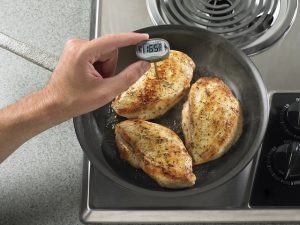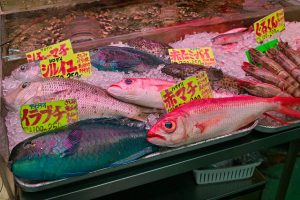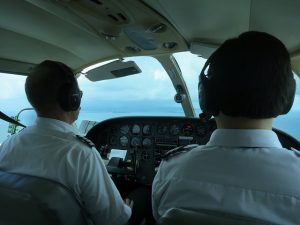Food Safety for Private Jet Flight Attendants
Food safety knowledge is very important for Private Jet Flight Attendants, if you get someone sick or handle the food improperly that could be a liability for you and the company. Before choosing your approach to in-flight food service, find out what the company rules are, and the country rules are.
In Europe you must be a certified food handler to even serve on board and if you are doing the cooking and not using a caterer in the US you must have a food handlers certificate.
Ultimately, if you cook at home or on board you are legally liable if you cause someone to become ill, serve them an allergen or mishandle food and it becomes contaminated in any way.
Food Safety is another issue when you don’t order from a caterer. You have to be prepared to keep the food safe and below the temperature danger zone at all times.
Photo by: The U.S. Department of Agriculture
The “cooling chain” refers to an uninterrupted series of storage and distribution activities which maintain a given temperature range. When the temperature of food fluctuates it creates an environment for bacteria to grow. Be sure to cool your prepared food immediately, and keep it at a cold temperature until you are ready to serve.
Food items prone to contamination:
[s2If !is_user_logged_in()] To read the rest of the article and enjoy so much more… login -> or join our Corporate Flight Attendant Club for FREE ->[/s2If] [s2If is_user_logged_in()]
Photo by: T-Mizo
- Meat (especially raw meat such as Carpaccio or beef tartare)
- Poultry
- Fish/seafood (especially raw fish such as sushi and sashimi)
- Eggs
- Dairy products (especially cheese [unpasteurized cheese in particular])
- Soy products
- Starch (e.g., bread, pasta, potatoes, and rice)
- Green, leafy vegetables
- Berries
- MushroomsThe cooling chain
“Cross-contamination” of food happens when harmful micro-organisms from raw food – such as raw meat or fish or unwashed vegetables – are transferred to ready-to-eat food, such as salads or sandwiches.
Ready-to-eat food will not be further cooked, so contamination at this point can lead to food poisoning.
MAIN CAUSES OF FOOD POISONING
- Meat, poultry, fish, and seafood are not cooked well enough or not reheated thoroughly
- Food is prepared too far in advance of eating
- Cooked food is contaminated by raw food
- Contaminated food is delivered
- Food handlers transmit pathogens
- Cooking surface and utensils are not cleaned properly
- One of the most important things is in restaurant facilitation ( when your client wants something from a restaurant). Restaurants usually have to give you the food hot and as Flight Attendants on the road its very difficult to cool that food fast to stop bacteria from growing.
A caterer will pick the food up for you and store it at appropriate temperatures. Check out our choosing a caterer article for help with this.
One of the most important things to remember when creating your menu for a Private Jet Flight:
NEVER SERVE THE SAME DISH TO BOTH PILOTS, IN CASE OF FOOD POISONING
Remember these tips and tricks when preparing all your food items for any flight, and keep your passengers food poisoning free!
[/s2If]This article on Food Safety on Business Aircraft may have been found by also searching:
- Private Jet Breakfast Recipes
- How to cook breakfast on a private jet
- Breakfast ideas for corporate flight attendants
- Vegan Breakfast – Tofu Scramble
- Flying on an business airplane and breakfast



